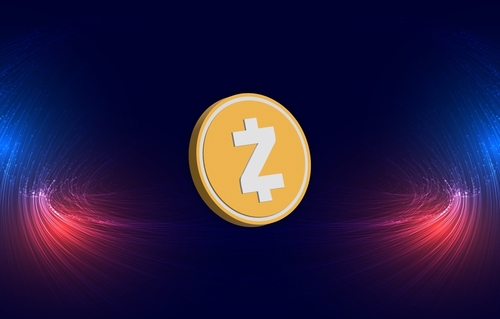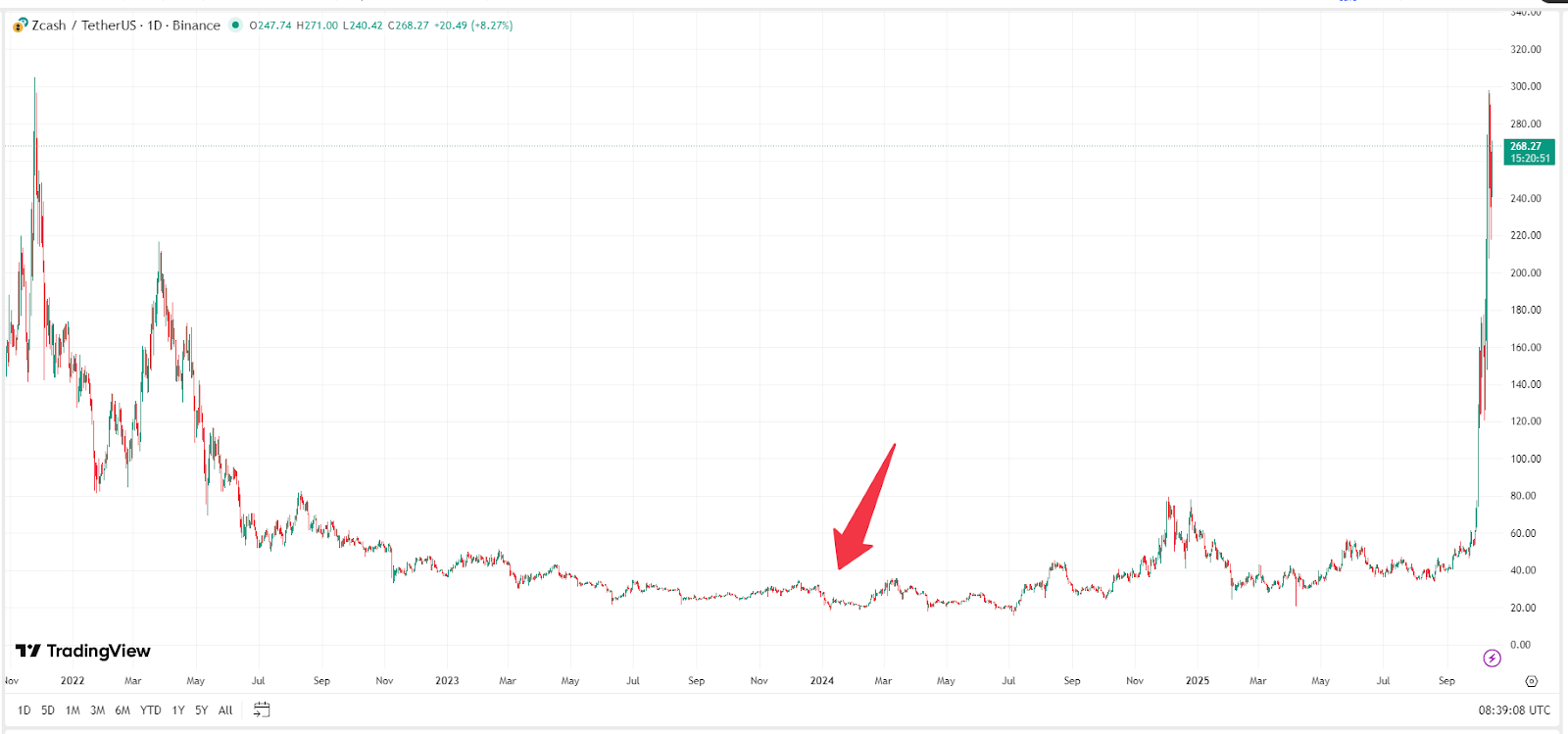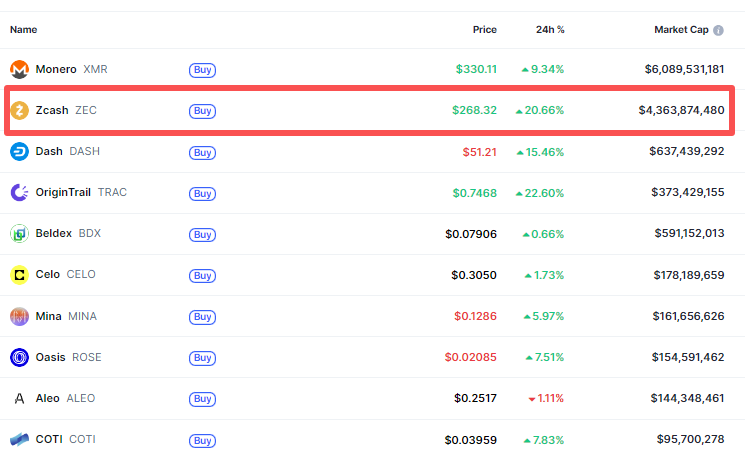Can Zcash (ZEC) Sustain Its Rally? What’s Next for Its Price Trajectory?


Preface
TradingKey – In October and November 2025, Zcash (ZEC) surged toward $300, marking a four-year high and drawing intense market attention. As one of the most prominent privacy coins in crypto, ZEC’s breakout was not just a technical event — it reflected a convergence of macro factors and investor sentiment.
This article explores ZEC’s momentum and outlook across four dimensions: technical upgrades, market demand, regulatory dynamics, and price forecasts.
What Is ZEC?
Launched in 2016, Zcash (ZEC) is a cryptocurrency focused on privacy protection. Its key innovation lies in selective privacy, allowing users to choose between transparent and shielded transactions. ZEC supports two types of addresses:
Address Type | Features |
Transparent Address | - Begins with “t” (e.g., t1abc...) <br> - Transactions are publicly visible, similar to Bitcoin and Ethereum. Anyone can trace amounts and flows on block explorers. |
Shielded Address | - Begins with “z” (e.g., zabc...) <br> - Transactions are encrypted and private. The network verifies validity without revealing sender, receiver, or amount. |
ZEC Tokenomics
Often dubbed the “privacy-enhanced version of Bitcoin,” ZEC shares many structural similarities with BTC but introduces advanced cryptographic features. Here's a side-by-side comparison:
Key Metric | ZEC | Bitcoin (BTC) |
Total Supply | 21 million | 21 million |
Consensus | Proof of Work | Proof of Work |
Halving Cycle | Every 4 years | Every 4 years |
Block Time | ~2.5 minutes | ~10 minutes |
Initial Allocation | 20% of block rewards (first 4 years) to founders, investors, and foundation | No preset allocation; all mined |
Purpose | Privacy-preserving digital cash and value transfer | Transparent, reliable store of value |
ZEC mirrors BTC’s supply and issuance model but optimizes transaction speed and introduces privacy-focused positioning.
How ZEC Differs from Other Privacy Coins
ZEC, Monero (XMR), and Dash (DASH) form the “privacy coin trinity,” but they differ significantly in technology, anonymity, and regulatory exposure:
Feature | ZEC | Monero (XMR) | Dash (DASH) |
Privacy Tech | Zero-knowledge proofs | Ring signatures, stealth addresses, RingCT | Coin mixing |
Anonymity Strength | High (optional, low adoption) | Very high (default, hard to trace) | Moderate (mixing can be analyzed) |
Default Privacy | No (requires z-addr) | Yes (all transactions private) | No (manual mixing required) |
Max Supply | 21 million | Unlimited (tail emission: 0.6 XMR/year) | 18.9 million |
Halving Mechanism | Every 4 years | None (gradual emission) | Every 210,240 blocks |
Regulatory Risk | High (delisted by many exchanges) | High (default privacy draws scrutiny) | Moderate (optional privacy) |
ZEC Market Performance
- 2022: Crypto bear market dragged ZEC from ~$350 to ~$30
- Dec 2023: OKX announced ZEC delisting, triggering panic selling and a 30% drop to ~$20
- Late 2024: Trump’s election win sparked a crypto bull cycle, lifting ZEC to ~$80
- Early 2025: Price corrected sharply post-inauguration
- Q4 2025: ZEC rebounded near $300, its highest since November 2021
 ZEC Price Chart – Source: TradingView.
ZEC Price Chart – Source: TradingView.
As of writing, ZEC trades at $268, with a market cap exceeding $4.3 billion, ranking second among privacy coins — well ahead of DASH and just behind XMR.
 Top 10 Privacy Coins by Market Cap – Source: CoinMarketCap.
Top 10 Privacy Coins by Market Cap – Source: CoinMarketCap.
Why Did ZEC Surge?
ZEC’s rally was driven by a mix of technical, institutional, and narrative catalysts:
- Privacy Demand Resurgence Global regulators are intensifying on-chain surveillance, prompting users and institutions to seek anonymity. ZEC’s opt-in privacy model makes it a prime beneficiary of this “digital privacy awakening.”
- Institutional Support In early October, Grayscale reopened Zcash Trust subscriptions, attracting fresh capital. Meanwhile, the Ethereum Foundation endorsed privacy project Railgun, integrating it into the Kohaku roadmap. Vitalik Buterin personally donated $300,000 to Railgun, boosting confidence in the privacy sector.
- Influencer Endorsement On October 1, Silicon Valley angel investor Naval Ravikant tweeted: “Bitcoin is insurance against fiat. Zcash is insurance against Bitcoin.” This sparked renewed interest and momentum.
- Community & Media Buzz ZEC saw a surge in mentions across X (formerly Twitter) and Telegram, while platforms like Gate.io published bullish forecasts and technical analyses, fueling FOMO and short-term buying.
ZEC Price Outlook
ZEC has rallied more than 10x from its $20 bottom, but still trades far below its all-time high above $4,000. Can it reclaim former glory?
 ZEC Long-Term Price Chart (2016–2025) – Source: CoinMarketCap.
ZEC Long-Term Price Chart (2016–2025) – Source: CoinMarketCap.
The most critical factor is Ethereum’s push into privacy. On October 8, the Ethereum Foundation launched a Privacy Research Cluster, covering private payments, anonymous voting, zkID, and Kohaku wallet development. If these initiatives succeed, ZEC could become a core infrastructure asset.
Scenario | Price Forecast | Conditions |
Bullish | $1,000+ | Ethereum privacy adoption, institutional inflows, regulatory clarity |
Neutral | $370–500 | Moderate adoption, stable sentiment |
Conclusion
ZEC’s breakout is more than a chart pattern — it’s the result of a broader privacy narrative and zk-tech convergence. In an era of AI-generated content and intensified blockchain surveillance, ZEC offers a privacy-compliant alternative. If it continues to evolve technically, expand real-world use cases, and maintain strong community governance, ZEC could re-enter the mainstream spotlight.







